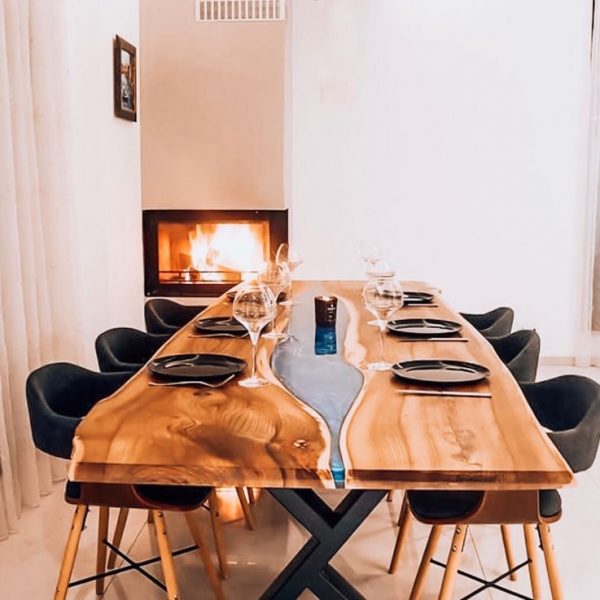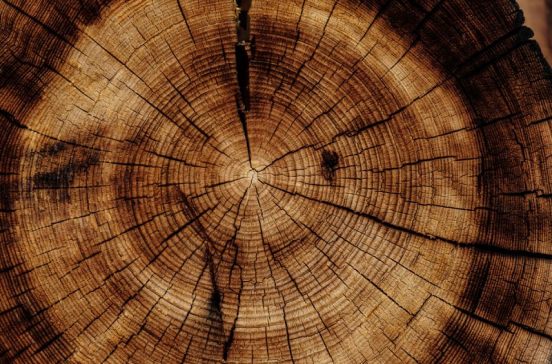Creators of Beautiful,
Timeless Furniture.
Custom-design your own one-of-a-kind piece of furniture today!
About New Roots
Where did we start? Why did we start?
We fell in love with beautiful custom slabs but unfortunately they were out of reach- waaaaaay out of our budget. So we started doing our homework to see what it would take to source authentic slabs, to nurture them, and then to create beautiful wow factor pieces . Our slabs are talking points; Where did we get them? What tree do these slabs come from? How did the tree fall? What scent and grain do these slabs have? The history of the tree and the birth of a new tree, always giving back and putting back into the environment.
Each slab comes with a certificate with the trees particulars. Such a great talking point when you are gathered around your dining slab drinking wine with your friends. We are giving the “us-es “ the opportunity to own custom pieces.
Why Choose New Roots?
Customisable
We design and create to your exact specifications, from size, to wood type, to legs design and more…
Quality
Delivery
We have partnered with a reputable courier service who takes absolute care in the delivery and installation of your furniture. A team will deliver and install these giant heavy pieces. (2 week turnaround time)
Sustainability
We believe in giving back and have partnered with the GreenPop Initiative who is involved in forest restoration. For every item purchased, we give back to the environment by planting a tree in the buyers name.
Product Ranges
Our ranges don’t end here but these are a few of the popular furniture categories:
Dining Room Tables
Decor & More
Coffee Tables
Log Stools
Custom Orders
When you commission a piece for your home, we start a journey together.
From deciding on what type of wood slab we will use – a live Edge piece or creating a river resin piece ( a variety of colour to choose from) – we start talking size; 4 seater, 6 seater, 8 seater, 10 seater or custom sizing.
Once you have chosen a slab and are happy with it, we start talking legs – are you looking for something rustic, or more classical. We look at where your piece is going to live in your home, and build beautiful legs will compliment and enhance your piece, the variety is endless when it comes to styles and colours available.

Tree Types
Get to know the types of wood we use to make our furniture:
- Leadwood
- Kiaat Tree
- Jacaranda Tree
Tree Size: medium to large tree. It typically grows 7 metres (23 ft) to 15 metres (49 ft) tall,but may reach 20 metres (66 ft). In maturity the single, solid bole may be up 1.5 metres (4.9 ft) in diameter.
Wood Characteristics: It burns very slowly with intense heat, and is often used for a fire which is intended to burn all night in order to keep wild animals at bay.
Range: It is native to the mesic savannas of Africa south of the equator, from KwaZulu-Natal province, South Africa, in the south to Tanzania in the north. It is a native tree in South Africa, eSwatini, Botswana, Namibia, Zimbabwe, Mozambique, Angola, Zambia and Tanzania.
Common uses: The wood is dense and very hard. It is termite resistant. It was once used for railway sleepers and is now prized as wood for ornamental work and furniture.
Interesting fact: Radiocarbon dating, done in South Africa, has established that a leadwood tree can live up to 1070 ± 40 years and subsequently remain standing for years after the tree has died.
Colour/Appearance: has a sparse, semi-deciduous canopy of grey-green leaves. The twigs and leaves are hairless as the name imberbe suggests. It has a spreading, rather sparse, roundish to slightly umbrella-shaped crown. The smallish, grey-green leaves and small, yellowish-green samaras are carried on spiny, attenuate branchlets. Its heartwood is dark brown, close-grained, and very hard and heavy, as suggested by its vernacular name.
Grain/Texture: The distinctive bark is pale to dark grey in colour, deeply fissured lengthwise.Irregular horizontal cracks infuse the bark a fairly regular, coarse-grained appearance.

Common Names:(African teak, wild teak)Muninga, Kiaat, Mukwa. Afrikaans: Kiaat, Sotho: Morôtô,, Zulu: Umvangazi. The name Kiaat, although Afrikaans, is sometimes used outside South Africa as well. In Rhodesia, depending on what region you are in, it is known as Mukwa or Mubvamaropa
Tree Size: 40-60 ft (12-18 m) tall, 1.5-2.5 ft (.5-.8 m) trunk diamete
Color/Appearance: Heartwood color can vary widely from a lighter golden brown to a darker reddish or purplish-brown. Colors tend to become more subdued with age. It varies greatly in color and weight. Sapwood is yellow. Heartwood ranges from light brown to dark reddish-brown, with purplish or golden wavy streaks often blended in the same piece of wood
Grain/Texture: Grain is straight to interlocked. Medium to coarse texture with a low natural luster
Wood Characteristics:
Range: Grows in the warm, frost-free areas in the northeast of the country, extending into Zimbabwe, northern Botswana, Mozambique and Namibia and northwards into other parts of Africa. native to southern Africa, in Angola, Mozambique, Namibia, South Africa, Swaziland, Tanzania, Zaire, Zimbabwe,and Zambia
Common uses: The heartwood makes high-quality furniture, as it is easily worked, glues and screws well and takes a fine polish. It shrinks very little when drying from the green condition, and this quality, together with its high durability, makes it particularly suitable for boat building, canoes and bathroom floors. It makes most handsome furniture and shelving, floors, panels, doors and window frames. Locally used for dishes, mortars and drums, and is one of the few woods favoured for canoe paddles and game and fish spears.
Interesting fact: The wood is renowned for its great bug and termite resistance.This graceful tree has very many uses and is much valued throughout Africa. The beautiful timber is easy to work and is used for furniture, implements and curios. Historically there was trade in this timber in the old Transvaal. This was on a minor scale and fitted in with the seasonal cattle drives from the lowveld winter grazing back to the highveld in summer. The red sap is used traditionally as a dye and in some areas mixed with animal fat to make a cosmetic for faces and bodies. It is also believed to have magical properties for the curing of problems concerning blood, apparently because of its close resemblance to blood. There are many medicinal uses recorded for kiaat, including treatment for ringworm, stabbing pains, eye problems, malaria, blackwater fever, stomach problems and to increase the supply of breast milk. The tree is sometimes planted around the chief’s enclosure to make a living fence. Baskets are also woven from the inner bark.
Common Names: Jacaranda. . It is also known as the jacaranda, blue jacaranda, black poui, or fern tree. Older sources call it J. acutifolia, but it is nowadays more usually classified as J. mimosifolia. In scientific usage, the name “jacaranda” refers to the genus Jacaranda, which has many other members, but in horticultural and everyday usage, it nearly always means the blue jacaranda.
Tree Size: Deciduous tree that grows 25-50′ tall in its native habitat.The tree grows to a height of up to 20 m (66 ft).
Colour/Appearance: Its bark is thin and grey-brown, smooth when the tree is young but eventually becoming finely scaly. The twigs are slender and slightly zigzag; they are a light reddish-brown. The flowers are up to 5 cm (2.0 in) long, and are grouped in 30 cm (12 in) panicles. They appear in spring and early summer, and last for up to two months. They are followed by woody seed pods, about 5 cm (2.0 in) in diameter, which contain numerous flat, winged seeds.
Grain/Texture: The wood is pale grey to whitish, straight-grained, relatively soft and knot-free.
Range: grows in the warm, frost-free areas in the northeast of the country, extending into Zimbabwe, northern Botswana, Mozambique and Namibia and northwards into other parts of Africa. native to southern Africa, in Angola, Mozambique, Namibia, South Africa, Swaziland, Tanzania, Zaire, Zimbabwe,and Zambia.
Range: Sub-tropical tree native to south-central South America that has been widely planted elsewhere because of its attractive and long-lasting violet-colored flowers
Common uses: The wood dries without difficulty and is often used in its green or wet state for turnery and bowl carving.
Interesting facts:
- They’re not South African
- They’re not always purple
- It can be dangerous to take pictures with them
- It’s illegal to plant new Jacaranda trees
- They were the star of one of the best April fool’s jokes everTHEY

Client Testimonials
Take it from a few of our very happy clients:
Our Instagram Feed
About New Roots
All our furniture is custom made to fit your exact requirements. Request a quote by filling out this form and we will be in contact with you in no time.
“Ancient trees are precious. There is little else on earth that plays host to such a rich community of life within a single living organism.”
― Sir David Attenborough
